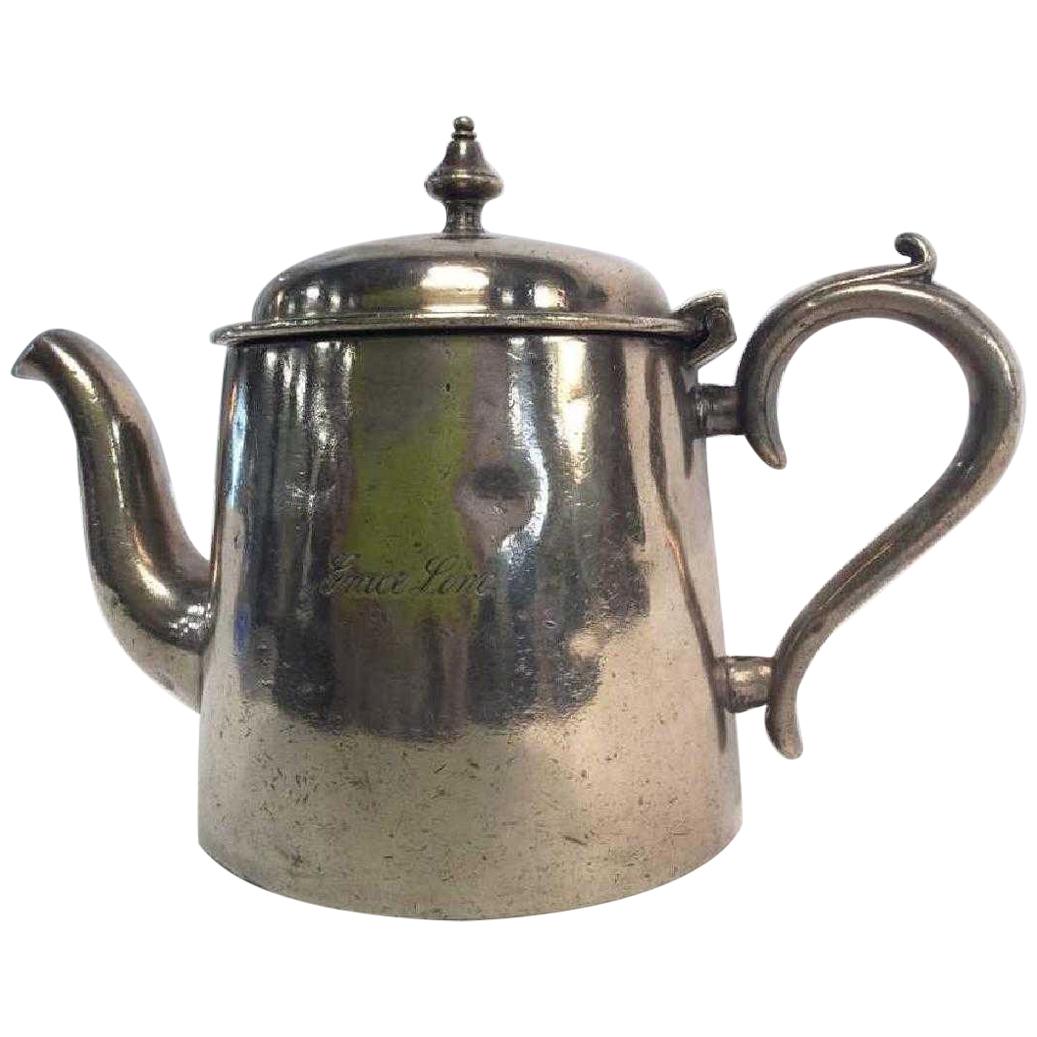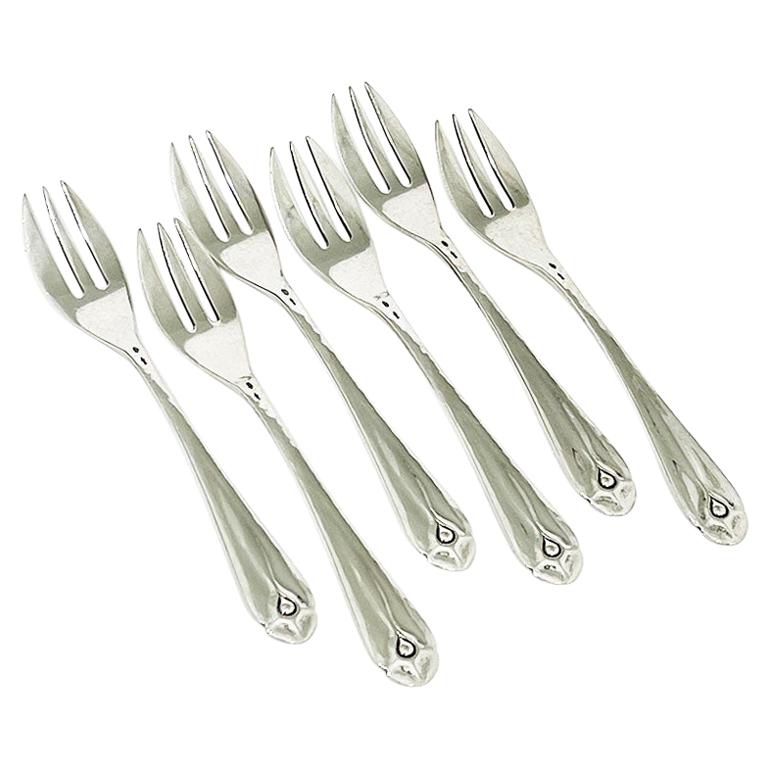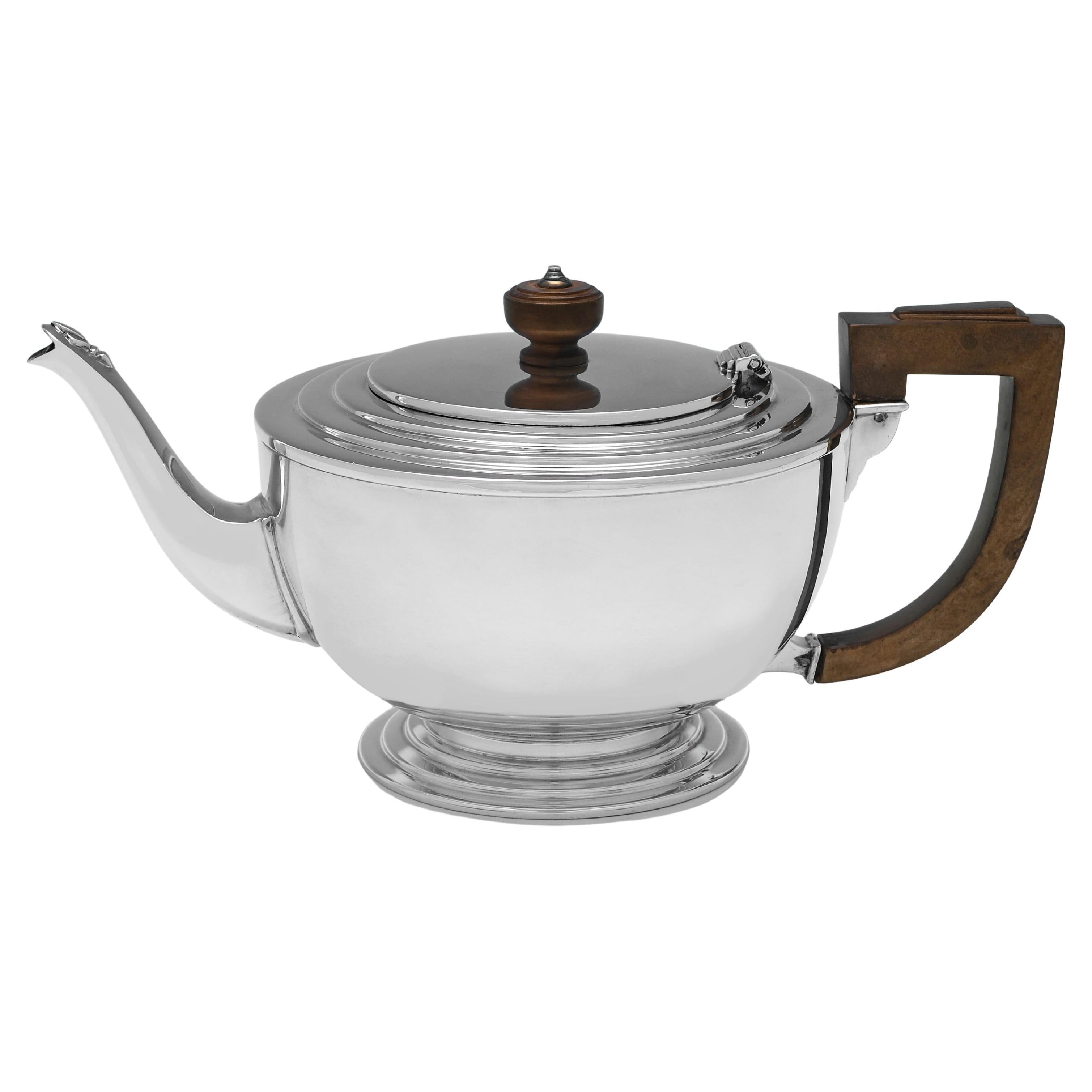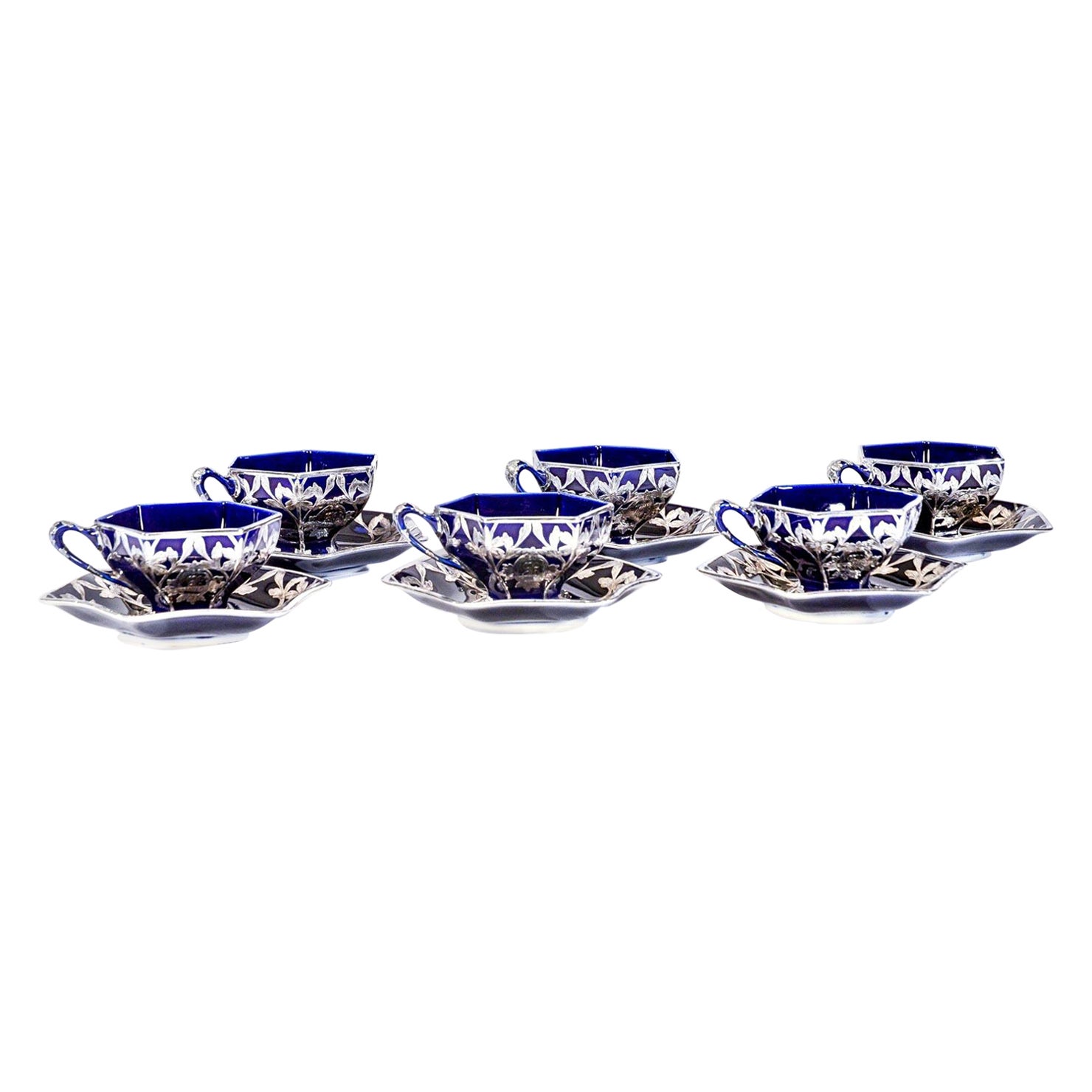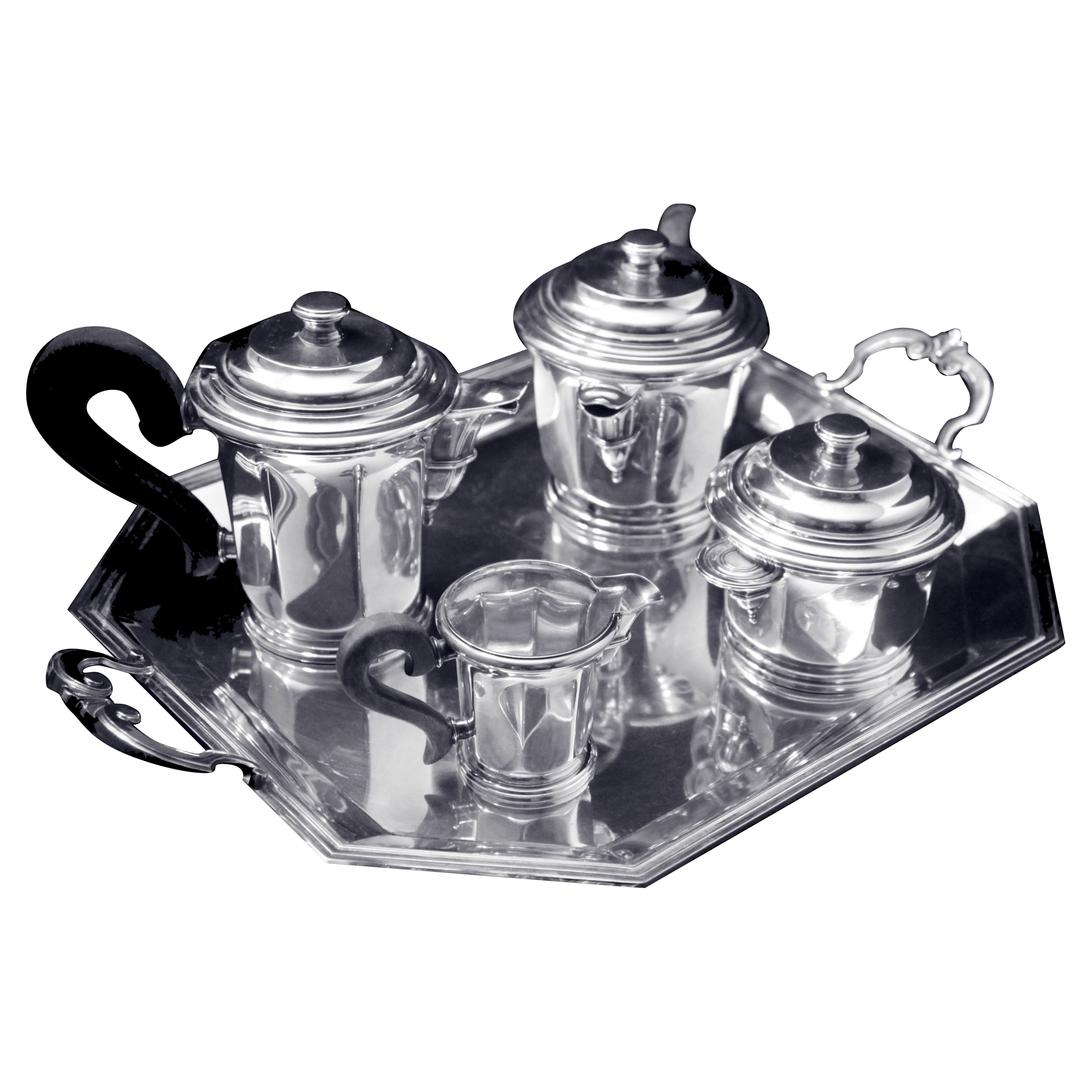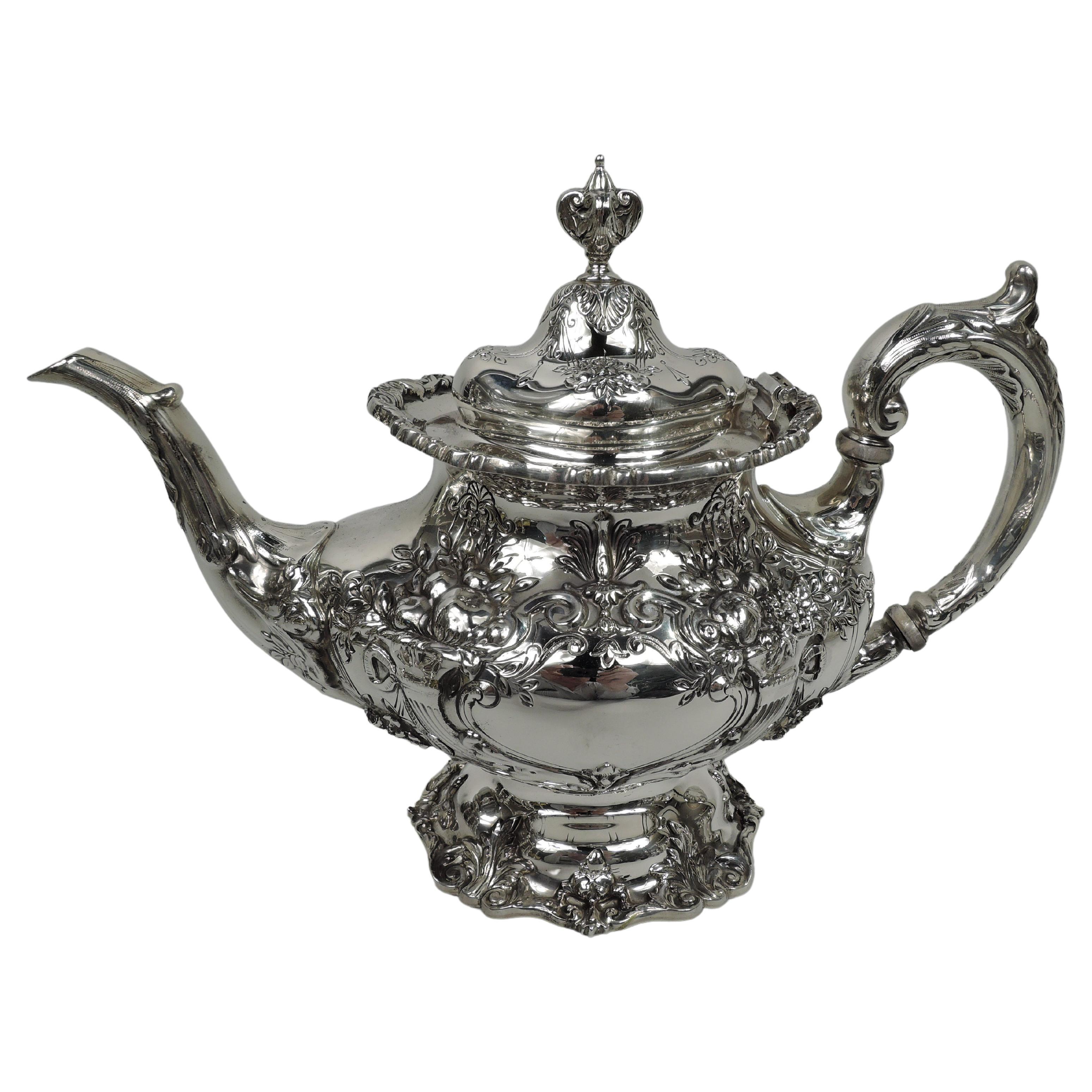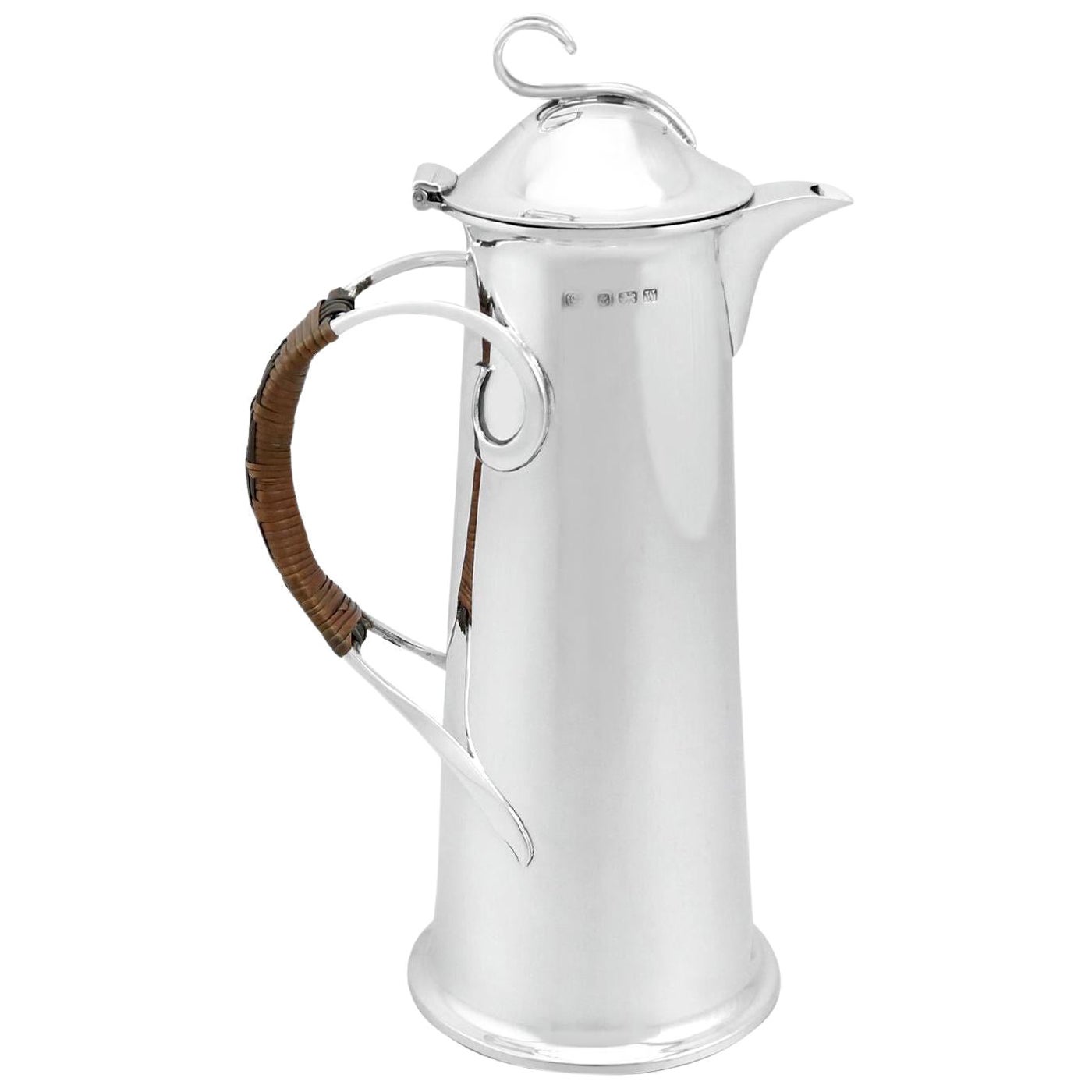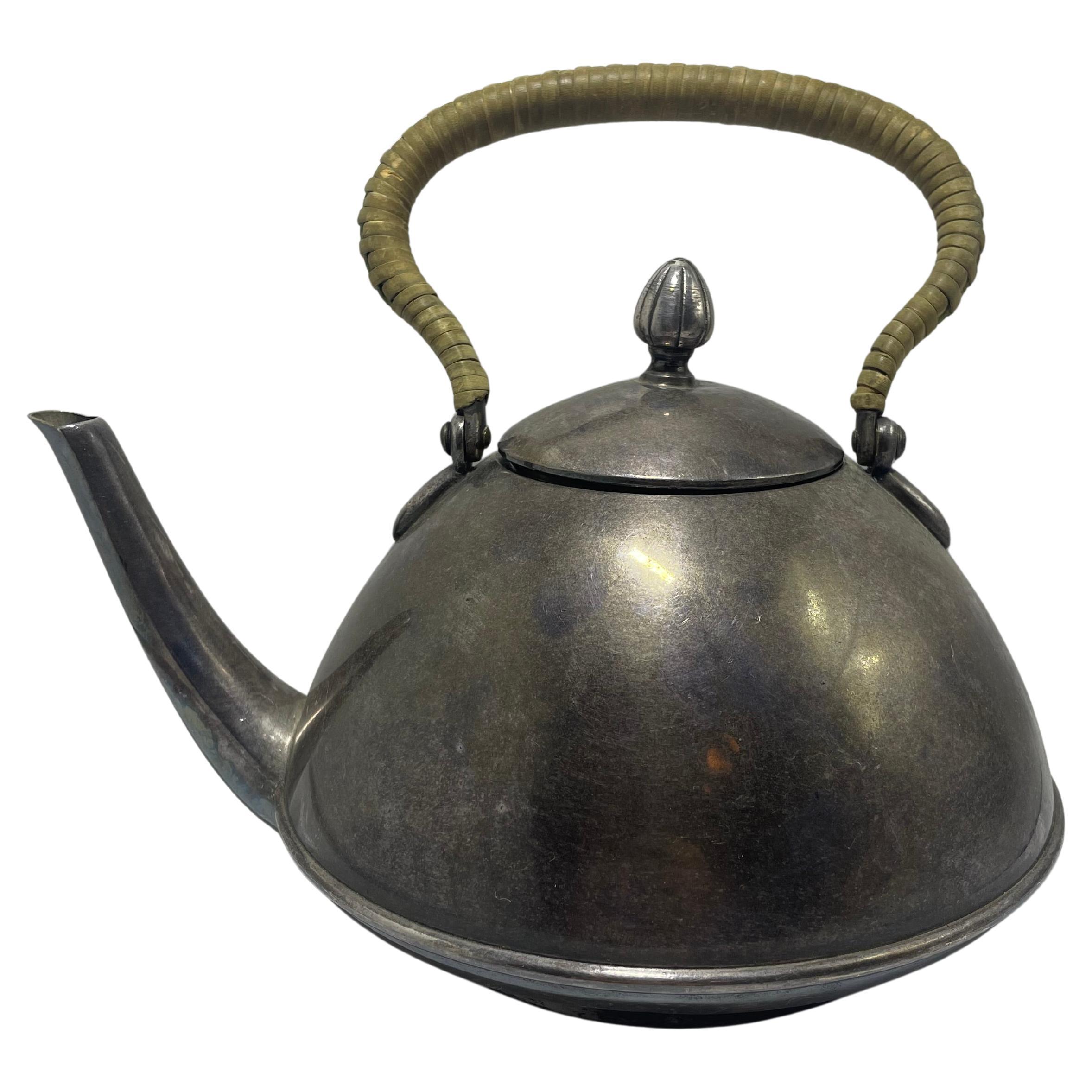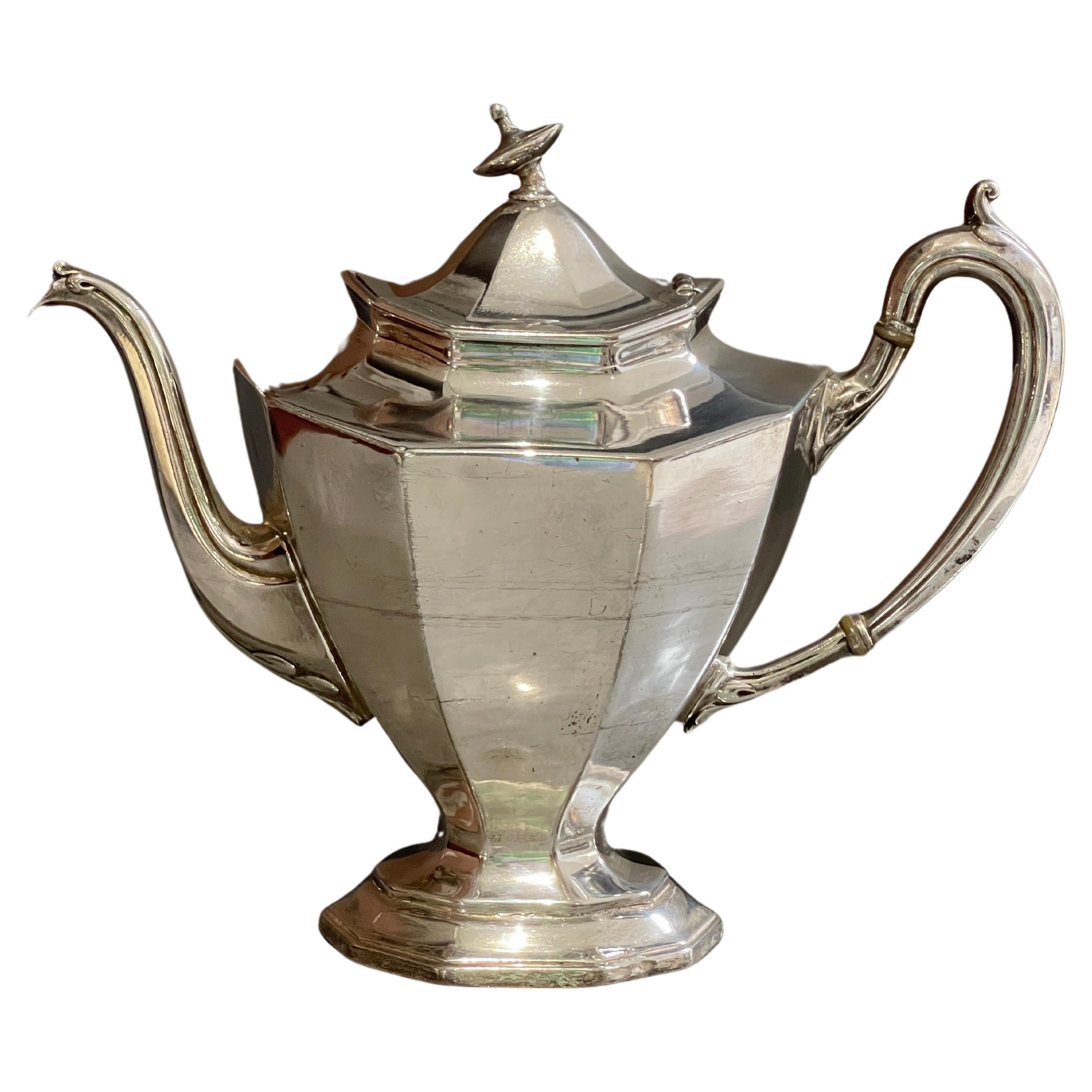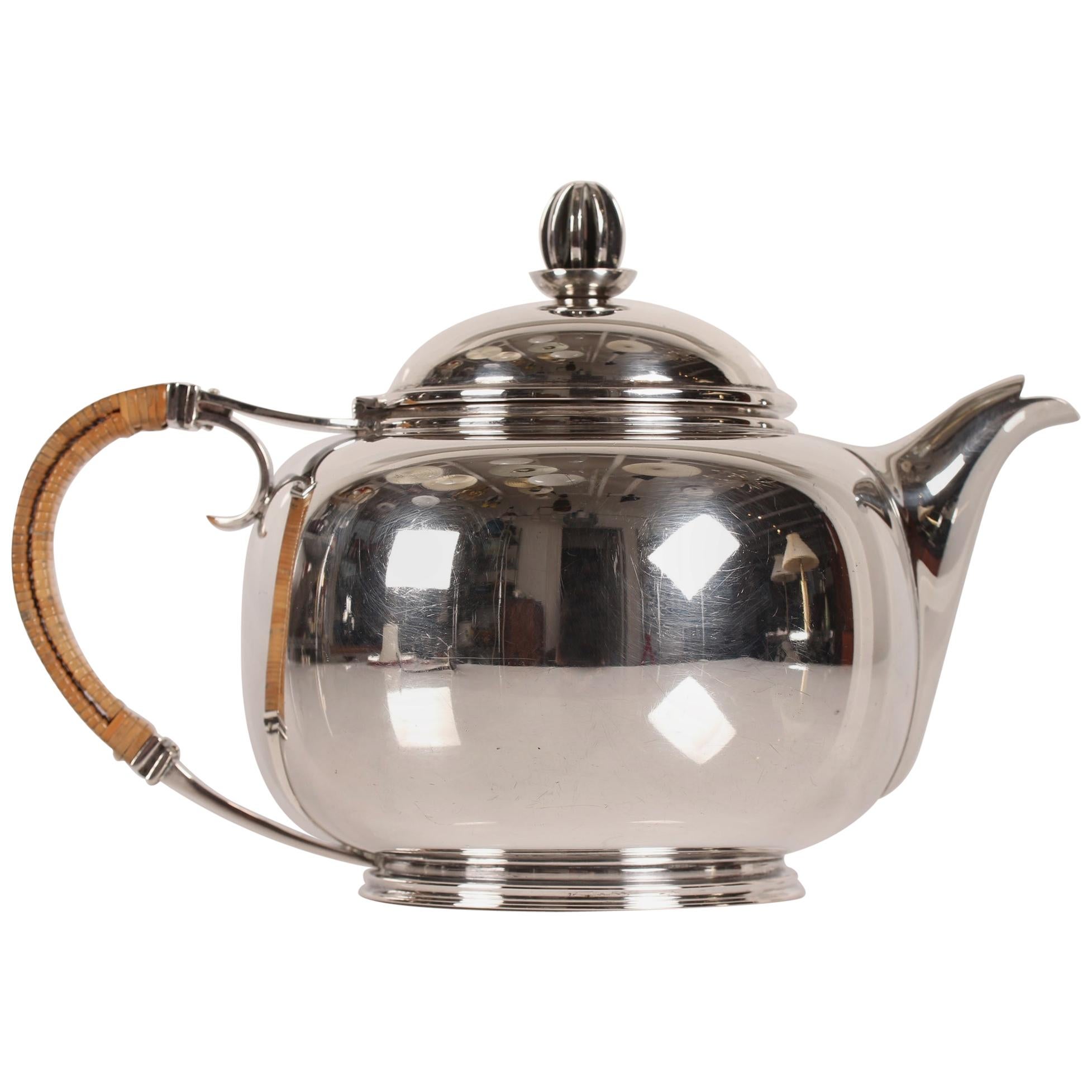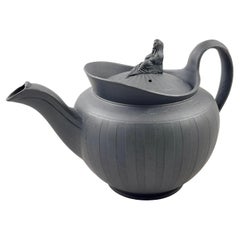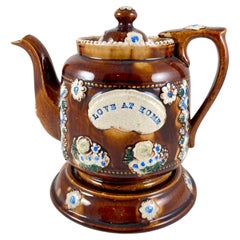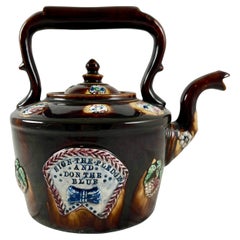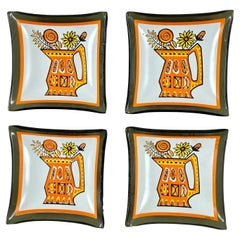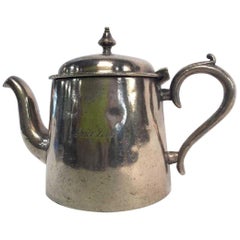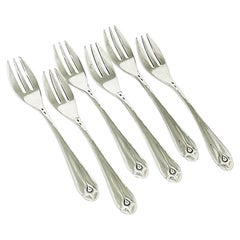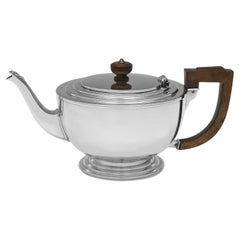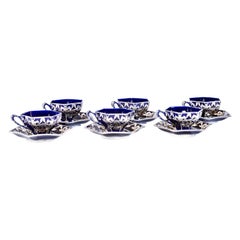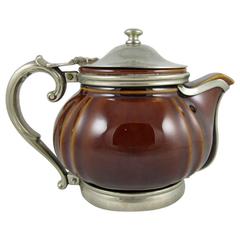
1920s Silver Soldered Art Deco One Cup Hotel Teapot
View Similar Items
Want more images or videos?
Request additional images or videos from the seller
1 of 11
1920s Silver Soldered Art Deco One Cup Hotel Teapot
$345List Price
About the Item
- Attributed to:Reed & Barton (Manufacturer)Lenox's Ceramic Art Company (Manufacturer)
- Dimensions:Height: 4.5 in (11.43 cm)Diameter: 6 in (15.24 cm)
- Style:Art Deco (Of the Period)
- Materials and Techniques:
- Place of Origin:
- Period:
- Date of Manufacture:1920s
- Condition:Wear consistent with age and use. Excellent un-polished condition.
- Seller Location:Philadelphia, PA
- Reference Number:1stDibs: LU175825735303
About the Seller
5.0
Platinum Seller
Premium sellers with a 4.7+ rating and 24-hour response times
Established in 1988
1stDibs seller since 2015
616 sales on 1stDibs
Authenticity Guarantee
In the unlikely event there’s an issue with an item’s authenticity, contact us within 1 year for a full refund. DetailsMoney-Back Guarantee
If your item is not as described, is damaged in transit, or does not arrive, contact us within 7 days for a full refund. Details24-Hour Cancellation
You have a 24-hour grace period in which to reconsider your purchase, with no questions asked.Vetted Professional Sellers
Our world-class sellers must adhere to strict standards for service and quality, maintaining the integrity of our listings.Price-Match Guarantee
If you find that a seller listed the same item for a lower price elsewhere, we’ll match it.Trusted Global Delivery
Our best-in-class carrier network provides specialized shipping options worldwide, including custom delivery.More From This Seller
View AllAdams Black Basalt Neoclassical Widow Teapot, Circa 1790
By William Adams (Potter)
Located in Philadelphia, PA
A scarce black Basalt engine-turned teapot, attributed to William Adams I (1746-1805) Burslem, Stoke-on-Trent, England, circa 1790.
William Adams I was an accomplished potter whose best known products included stonewares, jasper and basalt of the highest quality.
This teapot is beautifully modeled in the Neoclassical style with a parapet lip, and a lid finial representing the Sibyl, a seated female figure often referred to as the widow.
The basket like pattern on the body and lid was achieved by the use of an engine-turning lathe, first introduced to the Staffordshire pottery industry by Josiah Wedgwood in 1763.
Acanthus leaf detailing to handle and spout.
Black basalt pottery...
Category
Antique Late 18th Century English Neoclassical Tea Sets
Materials
Stoneware
English Measham Bargeware Love at Home Teapot on Stand
By Barge Ware
Located in Philadelphia, PA
A Measham – Bargeware Teapot impressed with the saying, “Love At Home”, England, circa 1880.
The three piece teapot set includes the kettle, lid, and table stand. Finished in a dar...
Category
Antique Late 19th Century English Aesthetic Movement Tea Sets
Materials
Pottery
English Measham Bargeware Blue Ribbon Teetotaler Temperance Motto Tea Kettle
By Barge Ware
Located in Philadelphia, PA
A Measham – Bargeware Tea Kettle impressed with the Blue Ribbon Temperance motto, England, circa 1880.
The Blue Ribbon Movement was active from 1880-1882 in Great Britain, Canada, and the United States. The ribbon badge was worn by those who took the pledge of abstinence from alcohol consumption, adopting the term teetotaler.
The kettle has a dark brown treacle glaze with enameled, raised and molded floral and fruit applications. The main panel, seen on both sides of the kettle reads, “Sign the Pledge, Don the Blue” The notched lid is held securely in place for pouring.
Measham Ware was decorated with floret appliqués and an impressed panel or banner personalized using a printer’s typeface. The pottery, also known as Rockingham or Motto Ware, was produced from the 1870’s by William Mason, a South Derbyshire potter.
Often called ‘barge ware’ because it was extensively marketed through a shop on Measham High Street, located near the canal bridge...
Category
Antique Late 19th Century English Aesthetic Movement Tea Sets
Materials
Pottery
Mid-Century Enameled Glass Tea Bag Holders, set of four
Located in Philadelphia, PA
A set of four enamel on smoke-colored glass tea bag holders, circa 1960s.
A charming set, used for holding a wet tea bag after removing it from a cup of hot water.
A Mod graphic o...
Category
Vintage 1960s American Mid-Century Modern Tea Sets
Materials
Art Glass
Art Deco Era Sterling Silver Personal Travel Ashtray & Match Holder
Located in Philadelphia, PA
An Art Deco Era Sterling Silver smoke set, an ashtray and match book holder, made for personal use while traveling, circa 1920-1930.
This set fits neatly into a jacket pocket.
For ...
Category
Early 20th Century American Art Deco Tobacco Accessories
Materials
Sterling Silver
Estate Sterling Silver Art Deco Era Individual Salt Spoons, set of 12
Located in Philadelphia, PA
A set of twelve, individual Sterling Silver salt spoons, hand-made, circa 1920s.
Lovely, simple Art Deco styling to the terminals of the handles.
2.25 inches long with bowls measur...
Category
Early 20th Century American Art Deco Sterling Silver
Materials
Sterling Silver
You May Also Like
Vintage Hotel Silver Plated Teapot
Located in Sheffield, MA
Vintage silver plated tea pot, 5 in x 7 in at widest point, some scratches and dents, marked Grace Line, an ocean liner, on one side of tea pot, underside marked 28088 e & co. In shield, Elkington Plate...
Category
Antique Late 19th Century North American Victorian Tea Sets
Materials
Silver Plate
$356 Sale Price
25% Off
Dutch Art Deco Silver Cake Forks by W. Hooijkaas, 1920s
By Herman Hooijkaas
Located in Delft, NL
Dutch Art Deco silver cake forks, 1920s
Dutch Art Deco silver cake forks of 11 cm long by the Silver smith W. Hooijkaas, Schoonhovense silver factory, Schoonhoven (1924-1943),
D...
Category
Early 20th Century Dutch Sterling Silver
Materials
Silver
Art deco sterling silver teapot hallmarked in 1930
By Deakin & Francis
Located in London, London
Hallmarked in Birmingham in 1930 by Deakin & Francis, this very handsome, George V period, Sterling Silver Teapot, is in the art deco taste, with stepped detailing to the base and li...
Category
Vintage 1930s English Art Deco Tea Sets
Materials
Sterling Silver
Set of 6 Lenox Art Nouveau Silver Overlay Cup & Saucers
By Lenox's Ceramic Art Company
Located in Great Barrington, MA
This set of 6 rare shaped hexagonal cups and saucers are made by the Ceramic Art Company, ca. 1887-1900 which later became Lenox. They are profusely decorated with elegant Art Nouveau sterling silver overlay with geometrically placed flowers which provides a lovely contrast to the rich cobalt blue ground. The rare shape adds to the beauty and uniqueness of design. The saucers measure 4.75" x 4.75".
This set of 6 Ceramic Art Company/Lenox cobalt...
Category
Antique Early 1900s American Art Nouveau Porcelain
Materials
Porcelain
Vintage 4-person Tea Set, Japanese, Ceramic, Teapot, Cups, After Arita, Art Deco
Located in Hele, Devon, GB
This is a vintage 4-person tea set. A Japanese, ceramic teapot and cups service in the manner of Arita ware, dating to the late Art Deco period, circa 1940.
Delightfully decorated t...
Category
Mid-20th Century Japanese Art Deco Tea Sets
Materials
Ceramic
Christofle - 5pc. Original French Art Deco Sterling Silver Tea Set, 1920s !
By Christofle
Located in Wilmington, DE
Direct from Paris, the birth place of Art Deco, a stunning 4 pc. Art Deco “Gatsby Era” sterling silver tea set plus serving tray by France’s premier silversmith Christofle, silversmith to the Emperor, in like new condition, circa 1920s. The name Christofle is synonymous with exquisite craftsmanship, luxury, and innovation in the world of silversmithing. Founded in the early 19th century, Christofle has established itself as a preeminent maker of fine silverware, celebrated for its elegant designs and impeccable quality. Throughout the 19th century, Christofle expanded its repertoire and clientele. The company garnered significant attention at international exhibitions, including the Great Exhibition of 1851 in London and the Exposition Universelle in Paris. These platforms showcased Christofle's ability to combine traditional craftsmanship with industrial innovation, setting new standards in silverware production.
The 20th century saw Christofle continue to adapt and innovate. The company embraced modern design movements, including Art Nouveau and Art Deco, which profoundly influenced its aesthetic and production techniques. Despite challenges posed by global conflicts and economic fluctuations, Christofle maintained its reputation for quality and luxury. Christofle's commitment to excellence has been recognized with numerous awards and accolades over its long history. The company's participation in international exhibitions frequently resulted in prestigious honors, solidifying its reputation on the global stage. Christofle's association with royalty and nobility is a significant aspect of its illustrious history. The company has supplied silverware to numerous royal households and aristocratic clients, underscoring its reputation for quality and prestige. In the 19th century, Christofle became the official supplier of silverware to Napoleon III. This royal patronage provided the company with unparalleled visibility and credibility. The French court's endorsement of Christofle's products served as a powerful marketing tool, attracting affluent clients from across Europe and beyond. Christofle's appeal extended far beyond France. The company supplied silverware to various European royal households, including those of the Tsar of Russia and the King of Greece. These commissions often involved the creation of bespoke pieces, tailored to the specific tastes and requirements of the royal clients. Such high-profile commissions further enhanced Christofle's reputation as a purveyor of luxury and excellence.
The Art Deco movement, which emerged in the early 20th century, profoundly influenced Christofle's design aesthetic. Characterized by geometric shapes, bold lines, and a focus on modernity, Art Deco represented a departure from the ornate styles of the past. Christofle embraced this movement, incorporating its principles into its silverware designs. Christofle's association with Art Deco is epitomized by its collaboration with renowned designers such as Jean Puiforcat and Luc Lanel. These designers brought a fresh, modern perspective to Christofle's creations, blending traditional craftsmanship with contemporary design elements. The result was a series of silverware pieces that were both functional and artistically innovative. The Art Deco influence is evident in Christofle's use of clean lines, geometric patterns, and a focus on form and function. This aesthetic was a marked departure from the elaborate, decorative styles that had previously dominated silverware design. Christofle's Art Deco pieces are celebrated for their timeless elegance and modern sophistication.
Among Christofle's most celebrated creations are its 950-sterling silver Art Deco tea sets...
Category
Early 20th Century French Art Deco Tea Sets
Materials
Silver Plate, Sterling Silver
$13,222 / set
Free Shipping
Recently Viewed
View AllMore Ways To Browse
Art Deco Tea Cup
Silver Tea Glass Holder
Reed A Barton Antique Silver
Hotel Silver Tea Set
Tea Cups 1920s
Reed And Barton Tea Pot
Tea Cup Holder
Reed And Barton Antique Silver Tea Set
Reed And Barton Teapot
Reed Barton Deco
Silver Soldered Tea Set
Lenox Art Deco
Hotel Silver Teapot
Reed Barton Cup
Lenox Tea
Vintage China Tea Sets Porcelain China
18th Century Coffee Pot
Art Deco Sugar And Creamer
